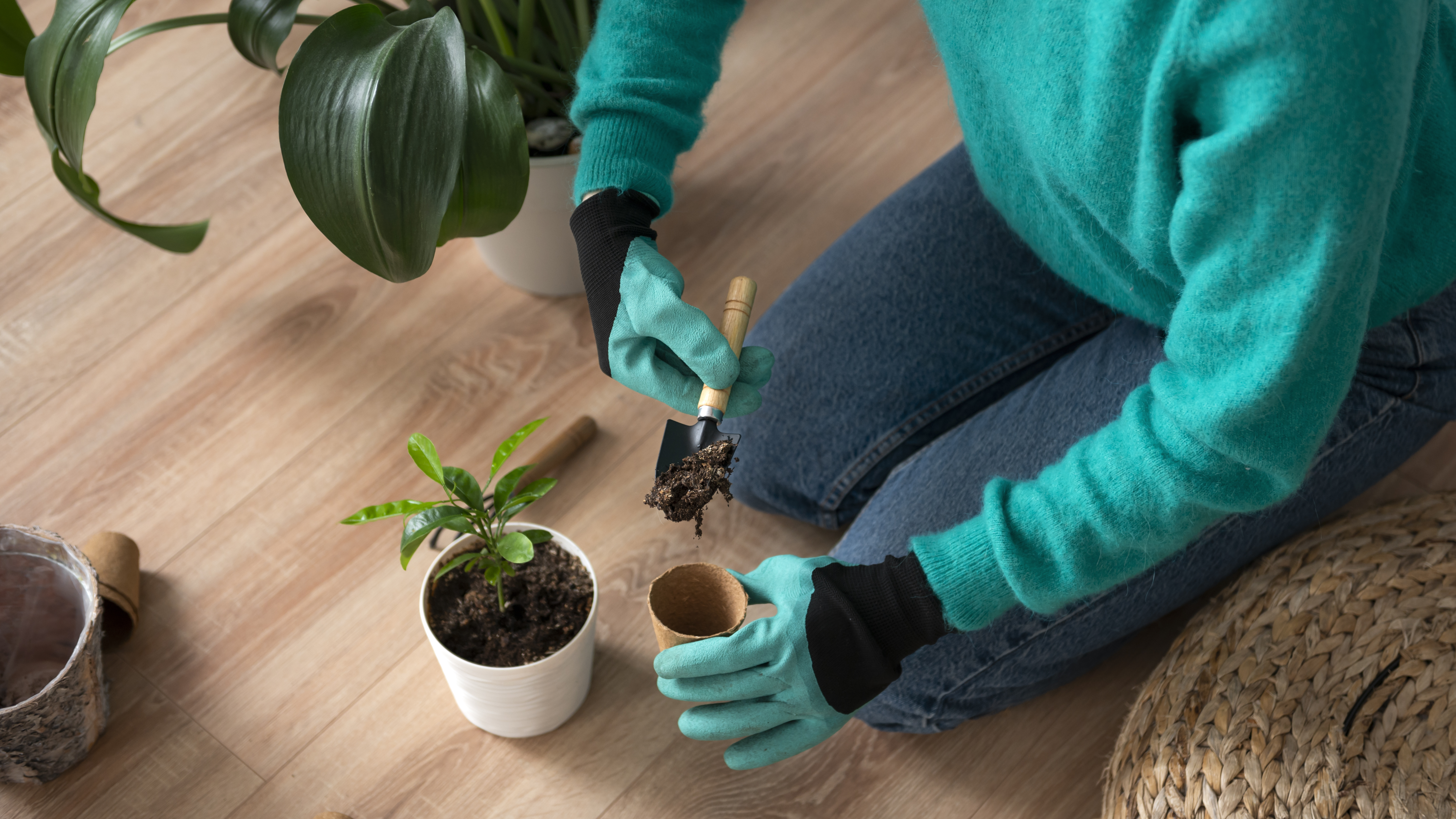
What is Coco Peat?
Coco peat, also known as coir pith or coir dust, is a spongy, fibrous material derived from the husk of coconuts. It is a byproduct of the coconut fiber extraction process and is widely used as a soil amendment or a soilless growing medium.
Key Properties of Coco Peat:
- Lightweight and easy to handle.
- Excellent water retention capacity.
- High aeration and porosity
- pH neutral to slightly acidic (5.5 to 6.5).
- Sustainable and biodegradable
How Coco Peat Benefits Plant Health:
Lightweight and easy to handle.
Coco peat can retain water up to 8–10 times its weight. This means your plants receive a steady supply of moisture without the risk of waterlogging. This is especially beneficial in arid climates or for gardeners who may not water their plants regularly.
Benefit:Promotes consistent hydration, reducing plant stress and improving growth.
Improved Root Aeration.
Roots need both water and oxygen to thrive. Unlike heavy clay soils that can suffocate roots, coco peat has a light, porous structure that allows for excellent air circulation around the root zone.
Benefit:Acts as a protective barrier, reducing the need for chemical pesticides.
Natural Disease Resistance.
Coco peat contains natural compounds such as lignin, which helps suppress harmful soil pathogens. Its antifungal properties reduce the incidence of root diseases, promoting healthier plants.
Benefit:Encourages strong root development and reduces the risk of root rot and fungal diseases.
Eco-Friendly and Sustainable.
Unlike peat moss—which is extracted from ecologically sensitive bogs—coco peat is a renewable resource. It utilizes coconut husk waste that would otherwise be discarded, making it a more sustainable option for environmentally conscious growers.
Benefit:Supports green gardening practices and sustainable agriculture.
Great for All Types of Plants.
From vegetables and herbs to flowering plants and succulents, coco peat is versatile and adaptable. It can be used in pots, grow bags, seed starting trays, and hydroponic systems.
Benefit:Universal growing medium suitable for all stages of plant growth.
How to Use Coco Peat in Your Garden?
Using coco peat is straightforward, but here are a few tips to get the most out of it:
Step 1: Rehydrate the Coco Peat
- Place the brick in a large container.
- Add warm water and let it expand for 20–30 minutes.
- Fluff it with your hands to break up any clumps.
Coco peat is usually sold in compressed bricks. To use it:
Step 2: Mix with Other Components (Optional)
- For potting mix: Combine with compost, perlite, and vermiculite.
- For seedlings: Mix with sand and compost to improve drainage and nutrients.
- For hydroponics: Use as a standalone medium with regular nutrient feeding.
While coco peat works great on its own, it’s often combined with other materials for a balanced medium:
Step 3: Use for Planting:
You can now use the hydrated coco peat as a planting base, seed starter, or soil conditioner. It’s excellent for container gardening, vertical gardens, and raised beds.
Tips for Maximizing Plant Health with Coco Peat:
- Add Nutrients: Coco peat is low in nutrients, so it’s important to supplement with organic compost or liquid fertilizers. When using it in hydroponics, use a nutrient solution tailored to your plant type.
- Monitor pH Levels: Although coco peat has a fairly neutral pH, check your mix periodically. Add lime if needed to raise pH for plants that prefer alkaline conditions.
- Reuse Responsibly: Coco peat can be reused several times, but always sterilize it between uses to prevent disease buildup. Rinse thoroughly to remove accumulated salts and ensure a healthy medium.
- Avoid Overwatering: Despite its water retention capabilities, coco peat can still cause overwatering if containers lack proper drainage. Use pots with holes and avoid letting water sit at the bottom.
Common Questions About Coco Peat:
- Is coco peat better than soil?
- Can coco peat be used alone?
- How long does coco peat last?
- Can coco peat be used alone for growing plants?
- How often should I water plants in coco peat?
- Can coco peat be reused?
- Where can I buy coco peat?
Coco peat isn’t a replacement for soil but an enhancer. It improves soil aeration and water retention while reducing compaction and disease risks.
Yes, but it performs best when enriched with nutrients. Use organic fertilizers, compost, or a nutrient solution for optimal plant health.
Coco peat can last 4–5 years if stored and used properly. However, it’s best to refresh or replace the medium after 1–2 growing seasons to maintain quality.
Yes, coco peat can be used as a standalone medium, especially in hydroponic setups. However, since it lacks essential nutrients, you’ll need to supplement it with fertilizers or compost.
Since coco peat retains moisture well, you won’t need to water as frequently. Check moisture levels by touching the medium—water only when it starts to feel dry about an inch below the surface.
Yes! Coco peat can be reused multiple times if properly cleaned and sterilized between uses. Make sure to rinse out any salt build-up and remove old root material.
Coco peat is widely available in garden centers, nurseries, and online platforms in the form of compressed bricks, loose bags, or grow discs.
Environmental Impact of Coco Peat:
By choosing coco peat, you’re not only benefiting your plants but also the planet. It repurposes agricultural waste, reduces the need for synthetic fertilizers, and helps conserve peat bogs—critical ecosystems that take thousands of years to regenerate.
Copyright 2024 © Digisnare Technologies LLP . All Rights Reserved

